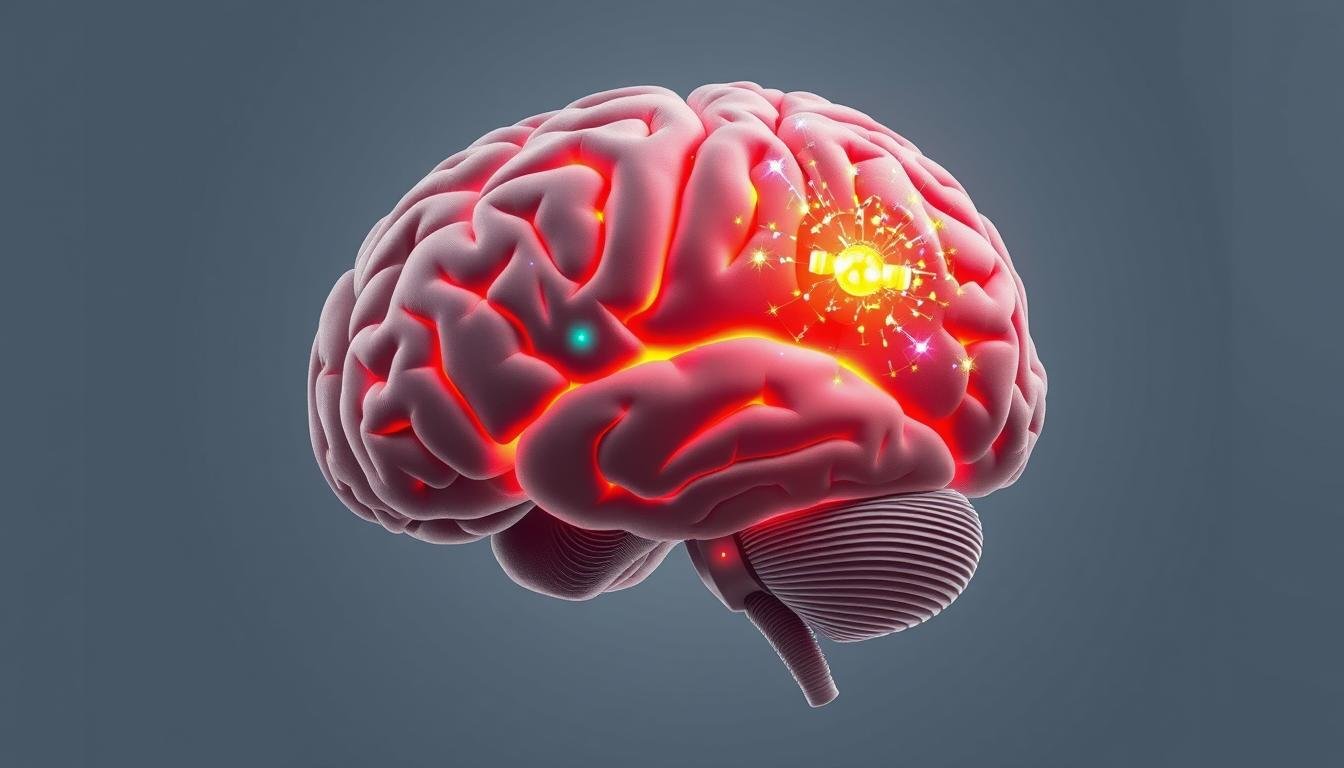Now Reading: The Science Behind Effective Listening: How Your Brain Processes Language
-
01
The Science Behind Effective Listening: How Your Brain Processes Language
The Science Behind Effective Listening: How Your Brain Processes Language

The Science Behind Effective Listening: How Your Brain Processes Language
Effective communication is the foundation of any successful interaction, be it personal or professional. One surprising statistic highlights the importance of listening skills: research suggests that individuals who are better listeners tend to have better relationships and greater career success.

The ability to listen effectively is closely linked to how our brains process language. When we listen, our brains are not just passive recipients of information; they actively engage with the speaker, processing the sounds, syntax, and semantics of language to extract meaning. This complex cognitive process involves multiple brain regions, including those responsible for auditory processing, memory, and attention.
Understanding the cognitive aspects of listening comprehension can help us become more effective communicators. By improving our listening skills, we can enhance our ability to understand and interpret the information being conveyed, leading to better retention and recall of the information.
Key Takeaways
- The brain’s ability to process language is influenced by prior knowledge and experience.
- Effective listening involves active engagement with the speaker and the material being listened to.
- Improved listening skills can lead to better comprehension and retention of information.
- Cognitive processes such as attention and memory play a crucial role in listening comprehension.
- The complexity of language processing in the brain underscores the importance of effective communication.
The Neuroanatomy of Listening
Effective listening is a complex cognitive process that involves multiple brain regions. The process of listening comprehension is closely linked to the neuroanatomy of language processing.
Primary Auditory Cortex and Its Functions
The primary auditory cortex, located in the temporal lobe, is responsible for processing basic auditory information. It receives input from the thalamus and sends output to other parts of the brain, playing a crucial role in sound recognition and interpretation.
Wernicke’s Area: The Language Comprehension Center
Wernicke’s area, also known as the posterior part of the superior temporal gyrus, is a critical region for language comprehension. It is involved in the semantic processing of language, enabling us to understand the meaning of words and sentences.
Neural Pathways in Language Processing
Language processing involves a network of neural pathways that facilitate communication between different brain regions. The neural pathways involved in language processing are complex and multi-faceted, encompassing both verbal and nonverbal information.
How Sound Becomes Meaning
The process of sound becoming meaningful involves the integration of auditory information with prior knowledge and context. As we listen to spoken language, our brains rapidly process the sounds, syntax, and semantics to construct a coherent representation of the message.
Cognitive Processes in Auditory Comprehension
Effective listening is a complex cognitive process that involves multiple aspects of brain function, including attention and working memory. When we listen to spoken language, our brains process the auditory information in real-time, filtering out irrelevant sounds and focusing on the relevant information.
Working memory plays a crucial role in this process, as it temporarily stores and manipulates the information being processed. The capacity of working memory is limited, and when the amount of information exceeds this capacity, comprehension can be impaired.
Attention and Working Memory
Semantic processing refers to the process of extracting meaning from the spoken language. This involves analyzing the linguistic structure of the input, identifying the key concepts and relationships, and integrating this information with prior knowledge and context.
Semantic Processing
During semantic processing, the brain activates a network of interconnected regions, including those involved in language comprehension, such as Wernicke’s area and the left inferior frontal gyrus.
Syntactic Analysis
Syntactic analysis is another critical aspect of language comprehension, as it involves the analysis of the grammatical structure of the spoken language. This includes identifying the parts of speech, detecting phrase boundaries, and parsing the sentence structure.
The Role of Prior Knowledge
Prior knowledge plays a significant role in facilitating language comprehension. Listeners draw on their existing knowledge and experience to inform their understanding of the spoken language.
The Four Stages of Listening
Effective listening is a complex process that involves multiple stages, each playing a crucial role in how we comprehend and interpret the information we receive. Understanding these stages can significantly enhance our ability to communicate effectively.
Receiving: Sound Wave Reception
The first stage of listening is receiving, where our ears pick up sound waves and transmit them to the brain for processing. This initial stage is crucial as it sets the foundation for the subsequent stages.
Attending: Focusing on Relevant Information
As we receive the sound waves, the next stage, attending, comes into play. During this stage, our brain focuses on the relevant information while filtering out irrelevant details.
Understanding: Decoding the Message
The third stage, understanding, involves decoding the message. Here, the brain interprets the information, drawing upon prior knowledge, context, and linguistic cues to derive meaning.
Remembering: Storage and Retrieval
The final stage, remembering, pertains to the storage and retrieval of the information. Our brain stores the interpreted information in memory and retrieves it when needed.
Barriers to Effective Listening
Effective listening is a crucial aspect of communication, and various factors can impede our ability to listen effectively. Understanding these barriers is essential to improve our listening skills.
Cognitive Biases That Impair Listening
Cognitive biases play a significant role in hindering effective listening. These biases can lead to misinterpretation, miscommunication, and a breakdown in the listening process.
Environmental Distractions
Environmental distractions are another significant barrier to effective listening. These distractions can be in the form of background noise or visual distractions.
Psychological Barriers
Psychological barriers also play a crucial role in hindering effective listening. Some of these barriers include our emotional state and motivation.
Overcoming Confirmation Bias
To overcome confirmation bias and other cognitive biases, it is essential to be aware of their presence and actively work to mitigate their impact.

Active Listening: The Science-Backed Approach
Active listening is a crucial skill that involves more than just hearing the words being spoken. It requires engaging multiple brain regions to comprehend and process the information effectively.
Neurological Benefits of Active Listening
Research has shown that active listening has numerous neurological benefits. By engaging multiple brain regions, active listening can improve cognitive function, enhance memory, and promote better comprehension.
Techniques for Engaging Multiple Brain Regions
Several techniques can be employed to engage multiple brain regions during active listening. These include maintaining eye contact, using verbal and nonverbal cues, and asking clarifying questions.
Measurable Outcomes of Active Listening Practice
The practice of active listening has been shown to have measurable outcomes. Studies have demonstrated that individuals who engage in active listening exhibit improved cognitive function, including better comprehension and retention of information.
Case Studies: Before and After Brain Activity
Several case studies have investigated the effects of active listening on brain activity. One study found that individuals who practiced active listening showed increased activity in areas of the brain associated with attention and working memory.

Developing Core Listening Skills Based on Neuroscience
Effective listening is a complex skill that involves various cognitive processes. One crucial aspect is attentional control, which enables individuals to focus on relevant information while filtering out distractions.
Attentional Control Exercises
The Pomodoro Technique is a widely recognized method for improving focused listening. This technique involves working in concentrated intervals (typically 25 minutes) called “Pomodoros,” separated by short breaks.
The Pomodoro Technique for Focused Listening
- Focused Listening Intervals: Divide your listening task into shorter intervals (e.g., 25 minutes) to maintain focus.
- Breaks: Take regular breaks to recharge and avoid burnout.
- Adaptability: Adjust the length and frequency of your listening sessions according to your needs and the complexity of the material.
Working Memory Enhancement Techniques
In addition to attentional control, working memory plays a vital role in effective listening. Techniques that enhance working memory can significantly improve an individual’s ability to retain and recall information.
- Chunking: Organize information into smaller, manageable chunks to reduce cognitive overload.
- Mnemonics: Utilize mnemonics to aid in the retention and recall of information.
- Repetition: Repeat key information to reinforce learning and improve retention.
Metacognitive Strategies for Comprehension
Metacognitive strategies involve being aware of one’s own cognitive processes and actively controlling them. By employing these strategies, individuals can improve their comprehension and retention of information.
- Self-Questioning: Regularly ask yourself questions about the material you are listening to, such as the main ideas, supporting details, and any unclear points.
- Summarization: Summarize the main points of the information to reinforce understanding and retention.
- Reflection: Reflect on your own learning process and identify areas where you need improvement.
The Role of Nonverbal Cues in Language Processing
## The Role of Nonverbal Cues in Language Processing
The integration of verbal and nonverbal information is a complex cognitive process that plays a crucial role in effective communication. When we engage in conversations, our brains process not only the verbal content of the message but also the nonverbal cues that accompany it.
### How the Brain Integrates Verbal and Nonverbal Information
Research in neuroscience and psychology has shown that the brain processes verbal and nonverbal information in an integrated manner. The left hemisphere of the brain is primarily responsible for processing verbal information, while the right hemisphere is more involved in processing nonverbal cues such as facial expressions, tone of voice, and body language.
Studies have demonstrated that the integration of verbal and nonverbal information occurs in a network of brain regions, including the primary auditory cortex, Wernicke’s area, and the basal ganglia. The processing of nonverbal cues is closely linked to the processing of verbal information, and both types of information are essential for effective communication.
### Mirror Neurons and Empathetic Listening
Mirror neurons are a type of brain cell that play a crucial role in empathetic listening. These cells are activated when we observe someone performing an action, and they are also activated when we perform the same action ourselves. The activation of mirror neurons is thought to be involved in the simulation of others’ actions and emotions, allowing us to empathize with others more effectively.
Empathetic listening involves not only understanding the verbal content of a message but also being sensitive to the nonverbal cues that convey the speaker’s emotions and intentions. By doing so, we can better understand the speaker’s perspective and respond in a more empathetic manner.
### Cultural Variations in Nonverbal Communication Processing
Nonverbal communication is not universal and can vary significantly across cultures. Different cultures place different emphasis on various nonverbal cues, and the interpretation of these cues can be culturally specific. For example, in some cultures, direct eye contact is considered a sign of confidence and respect, while in other cultures, it may be perceived as aggressive or confrontational.
The processing of nonverbal cues is also influenced by cultural norms and expectations. For instance, the use of gestures and body language can vary significantly across cultures, and the interpretation of these cues requires an understanding of the cultural context in which they are used.
By considering these factors, we can gain a deeper understanding of the complex processes involved in the integration of verbal and nonverbal information and develop a more nuanced appreciation for the role of nonverbal cues in language processing.
Empathetic Listening: The Neural Basis of Connection
## Empathetic Listening: The Neural Basis of Connection
Empathetic listening is a vital aspect of effective communication, enabling individuals to understand and connect with others on a deeper level. The neural basis of empathy is rooted in the brain’s ability to simulate others’ emotions and perspectives, fostering a sense of connection and understanding.
### The Neuroscience of Empathy
Research in neuroscience has shown that empathy is closely linked to the activation of specific brain regions, including the anterior cingulate cortex (ACC) and the insula. These regions are involved in emotion regulation, self-awareness, and empathy. When we engage in empathetic listening, our brain’s neural networks are activated, allowing us to better understand and share the feelings of others.
### How Perspective-Taking Activates Specific Brain Regions
Perspective-taking, or the ability to consider others’ viewpoints, is a crucial aspect of empathetic listening. By adopting others’ perspectives, we activate brain regions associated with empathy, such as the medial prefrontal cortex (mPFC) and the posterior cingulate cortex (PCC). This neural activation enables us to better understand and connect with others, fostering empathy and cooperation.
### Building Empathetic Listening Capacity
To develop empathetic listening skills, it is essential to engage in active listening practices, such as maintaining eye contact, asking open-ended questions, and paraphrasing others’ statements. By doing so, we can enhance our ability to understand and empathize with others, thereby strengthening our neural connections and promoting a deeper understanding of others’ emotions and needs.
#### Practical Exercises for Empathy Development
1. Active Listening Exercises: Engage in conversations with others, focusing on their experiences and emotions. Practice paraphrasing and summarizing others’ statements to improve comprehension.
2. Empathy-Inducing Activities: Participate in activities that promote empathy, such as role-playing, storytelling, or discussing social issues.
3. Mindfulness and Self-Reflection: Practice mindfulness and self-reflection to develop a greater awareness of your own emotions and those of others.
By incorporating these exercises into your daily life, you can cultivate empathetic listening skills, enhance your neural connections, and develop a deeper understanding of others.
Advanced Listening Skills: From Theory to Practice
Critical listening involves analyzing information, identifying the main ideas, and supporting details, and making informed decisions based on the evidence presented.
Critical Listening and Analytical Thinking
Critical listening involves analyzing information, identifying the main ideas, and supporting details, and making informed decisions based on the evidence presented. To cultivate critical listening skills, it is essential to engage in analytical thinking, which involves breaking down complex information into smaller components, evaluating the credibility of sources, and identifying biases.
Adaptive Listening in Different Contexts
Adaptive listening refers to the ability to adjust one’s listening style according to the context, taking into account factors such as the speaker’s tone, pace, and language.
Integrating Multiple Listening Modalities
Integrating multiple listening modalities involves combining different sources of information, such as auditory, visual, and kinesthetic cues, to facilitate comprehension.
Professional Applications in Various Fields
The skills developed through advanced listening practices have numerous professional applications across various fields, including education, business, healthcare, and law.
Digital Age Challenges to Listening Skills
In today’s digital age, our listening skills are faced with numerous challenges. The constant bombardment of information through various media channels can lead to attention fragmentation, making it increasingly difficult to focus on a single task or conversation.
Attention Fragmentation in the Information Era
The sheer volume of information available can be overwhelming, leading to a state of continuous partial attention. This can negatively impact our ability to engage in deep listening, as we are constantly switching between different sources of information, never fully focusing on any one thing.
Neuroplasticity and Adapting to New Communication Modes
Our brains are highly adaptable, and neuroplasticity allows us to reorganize and refine our listening skills in response to new communication modes. However, the constant exposure to digital media can lead to a decline in our ability to engage in meaningful conversations, as we increasingly rely on nonverbal cues and visual information.
Strategies for Deep Listening in a Distracted World
To mitigate the effects of attention fragmentation and promote deep listening, several strategies can be employed. These include practicing active listening techniques, such as focusing on a single task, avoiding multitasking, and engaging in conversations that promote empathetic listening.
By adopting these strategies, individuals can improve their listening skills, enhance their ability to engage in meaningful conversations, and foster a deeper understanding of the information being communicated.
Conclusion: Integrating Neuroscience into Everyday Listening Practice
Understanding the neuroscience behind listening can significantly enhance our communication skills. By integrating insights from the previous sections, we can refine our listening skills, fostering more empathetic and effective communication. The brain’s ability to process language is complex, involving multiple regions and networks. Active listening, backed by neuroscience, can improve our capacity for comprehension and retention.
Empathetic listening, a crucial aspect of effective communication, is closely linked to the neural basis of connection. When we engage in active listening, we activate various brain regions, including those involved in attention, working memory, and semantic processing. This activation enhances our ability to understand and retain information, ultimately leading to better communication outcomes.
By applying the knowledge gained from the article, readers can adapt their listening strategies to suit different contexts, improving their overall communication skills. This involves being aware of cognitive biases, environmental distractions, and psychological barriers that may impede effective listening. Moreover, incorporating techniques for engaging multiple brain regions and promoting neuroplasticity can further enhance listening abilities.
In conclusion, integrating neuroscience into everyday listening practice can have a profound impact on our communication skills. By adopting an active and empathetic listening approach, we can improve our ability to understand and connect with others, ultimately leading to more effective and meaningful interactions.
FAQ
What are the key factors that influence listening comprehension?
The key factors that influence listening comprehension include cognitive biases, environmental distractions, and psychological barriers. Understanding these factors can help improve listening skills.
How can I improve my listening skills?
Improving listening skills can be achieved by practicing active listening, being aware of cognitive biases, minimizing environmental distractions, and developing empathetic listening capacity.
What is the role of nonverbal cues in language processing?
Nonverbal cues play a significant role in language processing, as the brain integrates verbal and nonverbal information. Understanding the function of mirror neurons in empathetic listening and being aware of cultural variations in nonverbal communication processing can enhance listening comprehension.
How can I develop empathetic listening capacity?
Developing empathetic listening capacity involves understanding the neural basis of empathy, practicing perspective-taking, and engaging in exercises that promote empathy. This can be achieved through active listening and by being aware of the emotional and cognitive aspects of the message being conveyed.
What are the benefits of active listening?
Active listening has several neurological benefits, including improved attentional control, enhanced working memory, and better comprehension. Practicing active listening can lead to measurable outcomes, such as improved communication skills and deeper understanding of the material being listened to.
How can I apply the insights from neuroscience to improve my listening skills?
By understanding the cognitive aspects of listening comprehension and applying the insights from neuroscience, individuals can develop core listening skills, including attentional control, working memory enhancement, and metacognitive strategies for comprehension.






























